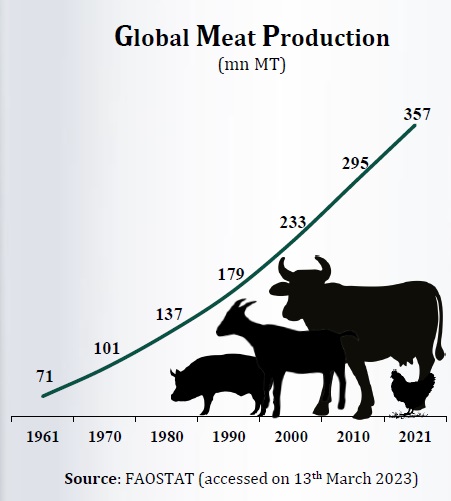New Update: The EU pesticide reduction policy ends up reducing agricultural production!

mn hectare
of Indian land area is irrigated. The largest in the world.

Million
population is engaged in Indian agriculture. It is the country’s largest private enterprise.

Rank
mm
is the average annual precipitation (rainfall) in India (2018), that is higher than China, USA, Australia, etc.
Myths & Facts About Indian Agriculture
Accidental exposures to pesticide spray drift kill farmers.
- Pesticides are sprayed diluted with water. The water content would be as high as 99% in the pesticide spray when applied to the crops.
- Accidental short exposures to such pesticide spray drift would not deliver lethal dose to the body of the sprayman.
- Of course, it is always recommended that such exposures are avoided.
Organic and bio-pesticides are safer than chemical pesticides.
- All substances used as pesticides, whether organic, bio or synthetic undergo the same toxicity, safety and efficacy assessments before allowed for commercial introduction.
- Crop protection industry in fact offers a variety of pesticide products – organic, bio and synthetic – to farmers enabling a diverse and inclusive approach to pest control.
Indian agriculture is on a permanent decline
- India rank 2nd in the world in agriculture production.
- India’s world rank in services and industry sector is 9th and 5th respectively.
- Indian agricultural production has increased from 87 USD bn to 459 USD bn in the past 15 years (12% annual growth).
- Globally India ranks 9th for the agricultural exports.
A global superpower in Agriculture
“Since the 1980s, Indian agriculture has undergone a shift in production, as farmers have planted less area to food grains and more to high-value crops. This shift coincides with strong economic growth, which has boosted incomes and, in turn, expanded consumer demand for higher valued foods, such as vegetables, fruits, milk, and some meat products. Yet, India’s agricultural policies continue to follow a Green Revolution strategy developed to achieve grain self-sufficiency in the 1960s”
India’s Agricultural Growth Propellers An analysis by United States Department of Agriculture (USDA), April 04, 2016
Everything you know about Indian Agriculture is wrong
Contrary to popular perception, Indian agriculture sector has been outperforming the much-discussed services and manufacturing sectors. We are now the worlds second-largest agriculture producer, thanks to a combination of natural and created strengths.
India is not only blessed with land, light, water and labour, Indian companies also produce everything required for agriculture, from seeds, fertilizers and irrigation equipment to farm machinery and plant health technologies.
Until 2000, Indian agricultural production was driven predominantly by food grains. Subsequent diversification into high-value crops (fruits and vegetables) and milk, aided by continuous improvements in communication, infrastructure and innovative techniques have transformed this into a dynamic enterprise. One thing is clear, Indian agriculture is no longer an underdog.
❝ Indian agriculture is no longer an underdog. Our agricultural production is far above that of the United States, which once supplied food grains to India to tide over our domestic food shortage.❞









